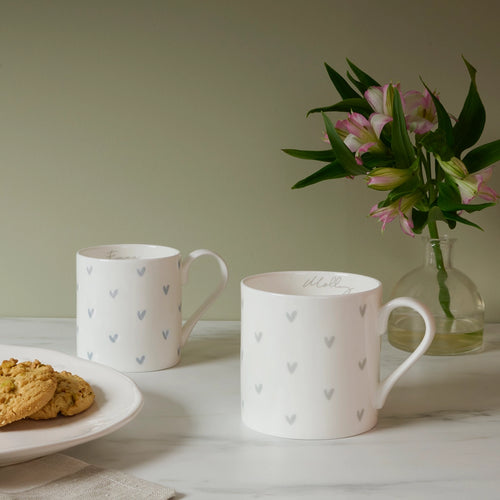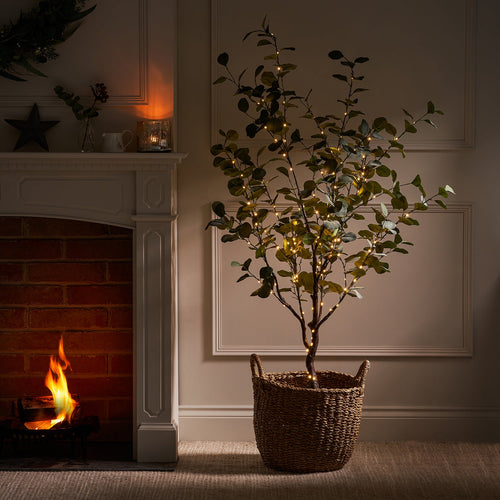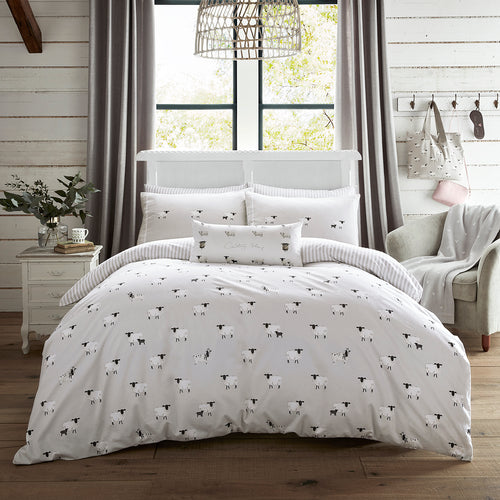The Horse. This beautiful and majestic animal has been by humans’ side since approximately 4000BC when we began domesticating them. However, their history goes back much further. Evolving from the small, multi-toed Eohippus over the past 45 to 55 million years, the horse has become the odd-toed hoofed mammal it is today. To celebrate Sophie's new Grey Horse collection, we’re sharing 10 interesting horse facts with you!
1. White horses are often actually grey
It is a rare occurrence to have a truly white horse. A white horse is usually predominantly white with pink skin. However, most horses that are described as “white” actually tend to be grey. The grey horse normally has black skin underneath its hair, with the exception of having pink skin underneath any white markings. As a grey horse ages, its hair can turn from a darker grey to white. There is also no such thing as an “albino” horse, defined as having both pink skin and red eyes.
2. You can estimate the age of a horse by looking at its teeth
It’s true! Throughout a horse's lifetime, its teeth continue to erupt and are worn down by grazing. Due to this, the incisors show changes as the horse ages. A distinct wear pattern develops and the teeth change in shape and angle where the chewing surfaces meet. Although this can’t determine a truly accurate age, it can allow for a rough estimate.
3. Horses need TLC too
Speaking of teeth, did you know horses require regular veterinary and dental check-ups, too? A horse dentist is called an equine dentist. They also need vaccinations and routine hoof care to keep them healthy and protected against various diseases. They also need adequate shelter. Although adapted to living outside, they need protection from wind and precipitation.
4. They need a minimum of 37 to 45 litres of water per day
Horses need a plentiful supply of clean water - a minimum of 37 litres to 45 litres a day! Access to quality forage from hay and pasture is essential for horses as they are grazing animals. A horse can consume approximately 2% - 2.5% of their body weight in dry feed each day. Concentrated feed, such as grain, is sometimes fed in addition to pasture or hay, particularly when the horse is very active.
5. Staying stable... they have a great sense of balance!
Believe it or not, horses have a great sense of balance! There are a few different reasons for this. One is their ability to feel their footing and the other is due to highly developed proprioception. This is the unconscious sense of where the body and limbs are at all times.
6. Horses can sleep standing up
Horses can sleep both standing up and lying down! This is due to an adaptation from life in the wild. A horse is able to enter light sleep by using a "stay apparatus" in their legs - this allows them to doze without collapsing. Horses tend to sleep better when in a group. This is because some will stay awake and stand guard while others sleep. A horse on its own may not sleep as well due to its natural instincts to be on guard and keep an eye out for danger. As an extra little fact, to reach REM sleep, a horse must lie down!
7. Meet the family...
In addition to the horse, there are six other species of the genus Equus in the Equidae family:
Mountain Zebra (Equus Zebra)
Plains Zebra (Equus Quagga)
Grévys Zebra (Equus grevyi) - Featured in our ZSL Collection!
Ass/Donkey (Equuis asinus)
Kiang (Eqqus Kiang)
Onager (Equus hemionus)
Horses can crossbreed with other members of their genus. You may have heard of hybrids such as the mule, the hinny and the zorse.
8. The "first" Grand National
The date of the first official Grand National is up for debate but most leading published historians prefer the idea that the first running was in 1836. This race was won by The Duke. This horse won again in 1837 followed by Sir William taking the win in 1838. These three races, however, have long been disregarded because it was believed they took place at Maghull, not Aintree. In recent years, some historians have found evidence that suggests these three races were run over the same course at Aintree.
9. Grey Horses feature on Sophie's latest collection
Perfect for all equestrian fans, Sophie's new horse collection features magnificent grey horses galloping on a moss stone green ground. Their attractive dapple-grey coat stands out whilst the wind blows through their mane and tail as they sprint. This lovely collection is sure to make a stylish statement with lots of gift inspiration and homewares for horse riders.
Do you have any interesting horse facts you'd like to share with us? Pop them in the comments below, we'd also love to hear your thoughts on Sophie's new Grey Horse design. Browse and shop the collection here!















